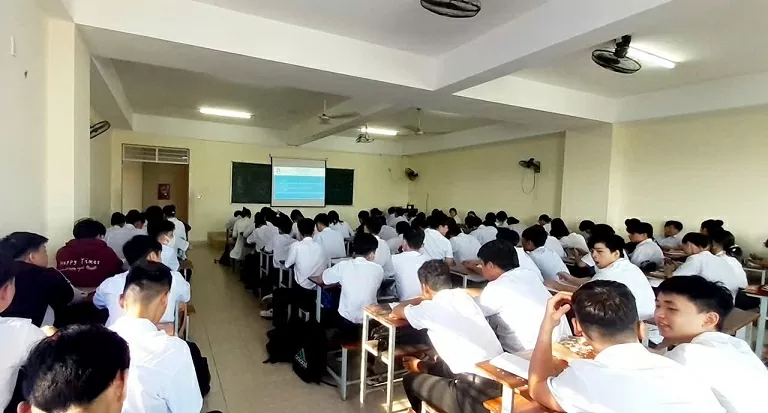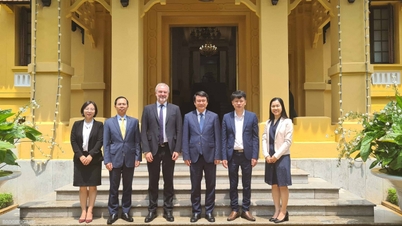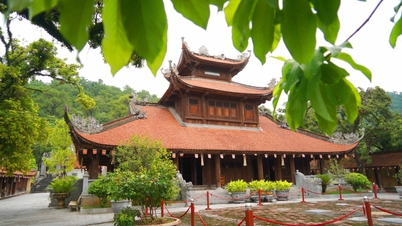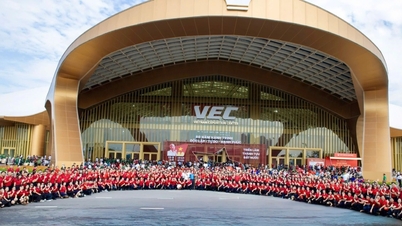The fact that universities still carry the names of old provinces and cities when they no longer exist administratively can cause confusion about geographical location, not accurately reflect the current administrative unit, causing difficulties in the work of unifying the management of the education system.
 |
| Universities need to develop creative spaces to help retain students after graduation. (Photo: Tran Xuan Tien) |
If the name is changed, it will increase recognition and become a new educational symbol for the new province or city after the merger. This is also an opportunity for universities to upgrade their image and build a new development orientation, linked to the educational development strategy of the new province or city.
However, if the name is changed to a new province or city, local universities will also face many challenges. The school name is a brand asset that has been built up and recognized through the history of formation and development.
When changing the name, not only is the image, admissions, scientific research, international cooperation, educational accreditation, etc. affected, but the feelings of lecturers, students, alumni, and local people are also disturbed.
In addition, it is also necessary to consider the procedures and costs related to changing seals, licenses, degrees, diplomas, record management, websites, etc.
And in terms of the overall national university education system, renaming a series of universities in many localities can easily lead to some unfamiliarity at first.
Ineffective operation
In fact, in recent years, if not counting local universities located in cities, all provincial universities have been in the same situation of ineffective operation.
A series of reasons have been pointed out: Lack of teaching staff, limited scientific research activities; training majors are still traditional, not attractive to learners; degraded facilities, lack of practice and internship rooms; undiversified sources of income, mainly dependent on tuition fees and local budgets, many schools even fall into the situation of owing salaries to staff and lecturers.
Besides, the competition of large universities (both public and private) in central cities is also the reason why students are no longer interested in local universities.
Convenient transportation, diverse majors, training programs updated with market and business trends, modern facilities, access to international exchanges, etc. are bright spots attracting students to universities in central cities.
Which way?
There is no general answer to the question of renaming local universities after provincial and municipal mergers. Obviously, in each specific case, we need to carefully evaluate based on the following criteria: existing brand value, training resources, development orientation of the new province or city, aspirations and adaptability of lecturers, students, and local people.
Whether or not to rename a school depends on the brand strength of each school and the context of each locality’s policies. But certainly, innovation in the quality of operations is a vital condition.
This is the right time for a comprehensive restructuring, transforming from a training unit based on ability to an educational model serving social needs.
Schools need to clearly define their role in the development ecosystem of new provinces and cities to build a human resource training strategy linked to the labor market, in-depth application, and directly serve key economic sectors and characteristics of the locality.
Instead of training what they have, schools need to shift to training what society needs, providing short-term training services, applied research, and technical support for local people, businesses, and cooperatives.
The school also needs to develop creative spaces, youth business incubation centers, technology incubators, etc. to help retain students after graduation, contributing to local economic development; at the same time, promote cooperation with units and businesses to create part-time job opportunities for students while studying.
And finally, it is necessary to diversify revenue sources (such as: educational services, research cooperation, short-term training, business links, etc.) to help the school survive and develop sustainably in a highly competitive context.
If it is necessary to change the school name, it should be implemented in conjunction with a professional communication campaign (both internal and external communication) to not only explain the reasons, introduce the new brand identity, affirm the position, promote the long-term vision but also help minimize the disruption in recognition, maintain consensus and trust of lecturers, students, alumni, businesses and partners. Changing the name is not just about changing the brand name, but must be associated with real innovation in training quality, development vision, creating a new image without losing the core values built in the past. |
( The article represents the author's views and does not necessarily reflect the views of the Editorial Board )
Source: https://baoquocte.vn/sau-sap-nhap-tinh-cac-truong-dai-hoc-co-nen-doi-ten-321150.html







![[Photo] General Secretary To Lam receives Assistant to the President of Russia, Chairman of the Federal Maritime Council of Russia Nicolai Patrushev](https://vphoto.vietnam.vn/thumb/1200x675/vietnam/resource/IMAGE/2025/9/16/813bd944b92d4b14b04b6f9e2ef4109b)
![[Photo] Prime Minister Pham Minh Chinh receives Minister of Foreign Affairs and Cooperation of Timor-Leste](https://vphoto.vietnam.vn/thumb/1200x675/vietnam/resource/IMAGE/2025/9/16/b0e99fd9a05846e4b6948c785d51d51f)





























![[Photo] National conference to disseminate and implement 4 Resolutions of the Politburo](https://vphoto.vietnam.vn/thumb/1200x675/vietnam/resource/IMAGE/2025/9/16/5996b8d8466e41558c7abaa7a749f0e6)
































































Comment (0)